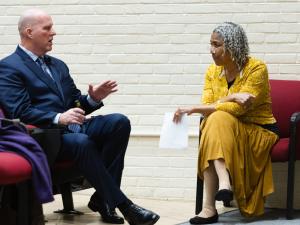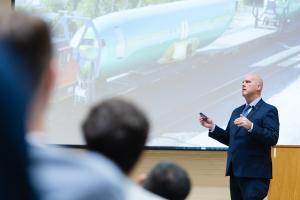
What responsibilities do engineers have when they see problems that might affect the safety of the products they help create, but decisionmakers disagree?
The importance of University of Virginia School of Engineering and Applied Science students asking themselves such questions, before they join the workforce, was a key theme of the inaugural “Moments of Strength” talk, held Thursday evening to a capacity crowd in McLeod Hall Auditorium. The series is sponsored by UVA’s new Engineering Character Strength Initiative.
“You are the protectors out there,” whistleblower and former Boeing manager Ed Pierson told students.
Pierson has for years flagged concerns with his former employer’s 737 Max aircraft. He told audience members that he still has “great regard” for the storied American company, but that he quit over concerns that Boeing was rushing to deliver unready planes to customers.
He recommended that the production floor be shut down until the quality control issues could be addressed. His bosses disagreed, so he resigned in protest. That was in August of 2018.
Viral Video Reminds World of 2 Plane Crashes
On Jan. 5 of this year, the plug keeping Alaska Airlines Flight 1282’s optional emergency exit door in place blew out shortly after takeoff, leaving a giant hole in the aircraft. Passengers, including those seated precariously close to the opening, looked on in fear behind their oxygen masks.

The depressurization reportedly sucked the shirt off a child and knocked flight crew into the walls of the cabin.
When Pierson mentioned the incident, a few students in the packed auditorium whispered; they remembered seeing the viral video and the related news coverage.
But on the surface, the incident seemed unrelated to the deadly “angle of attack” problems Boeing had previously encountered after the launch of its 737 Max 8 airplanes:
- On Oct. 29, 2018, Indonesia’s Lion Air Flight 610, one of the new aircraft, crashed into the Java Sea shortly after takeoff, killing all 189 occupants.
- On March 10, 2019, a similar crash with a Max 8 occurred with Ethiopian Airlines Flight 302 just minutes after takeoff, killing all 157 people aboard.
- In total, 346 people, along with an Indonesian search-and-rescue diver, perished related to the crashes, which occurred within a five-month span.
The major commonality in both instances was the 737 Max’s Maneuvering Characteristics Augmentation System, or MCAS. The flight control system was intended to improve the handling of the plane in unusual flight conditions. Instead, MCAS falsely sensed a steeper angle of ascent than was actually occurring. The planes’ programming overcompensated, sending the two aircraft into steep dives.
However, Pierson said he saw problems unrelated to this design that also troubled him before he left the Boeing factory in Renton, Washington.
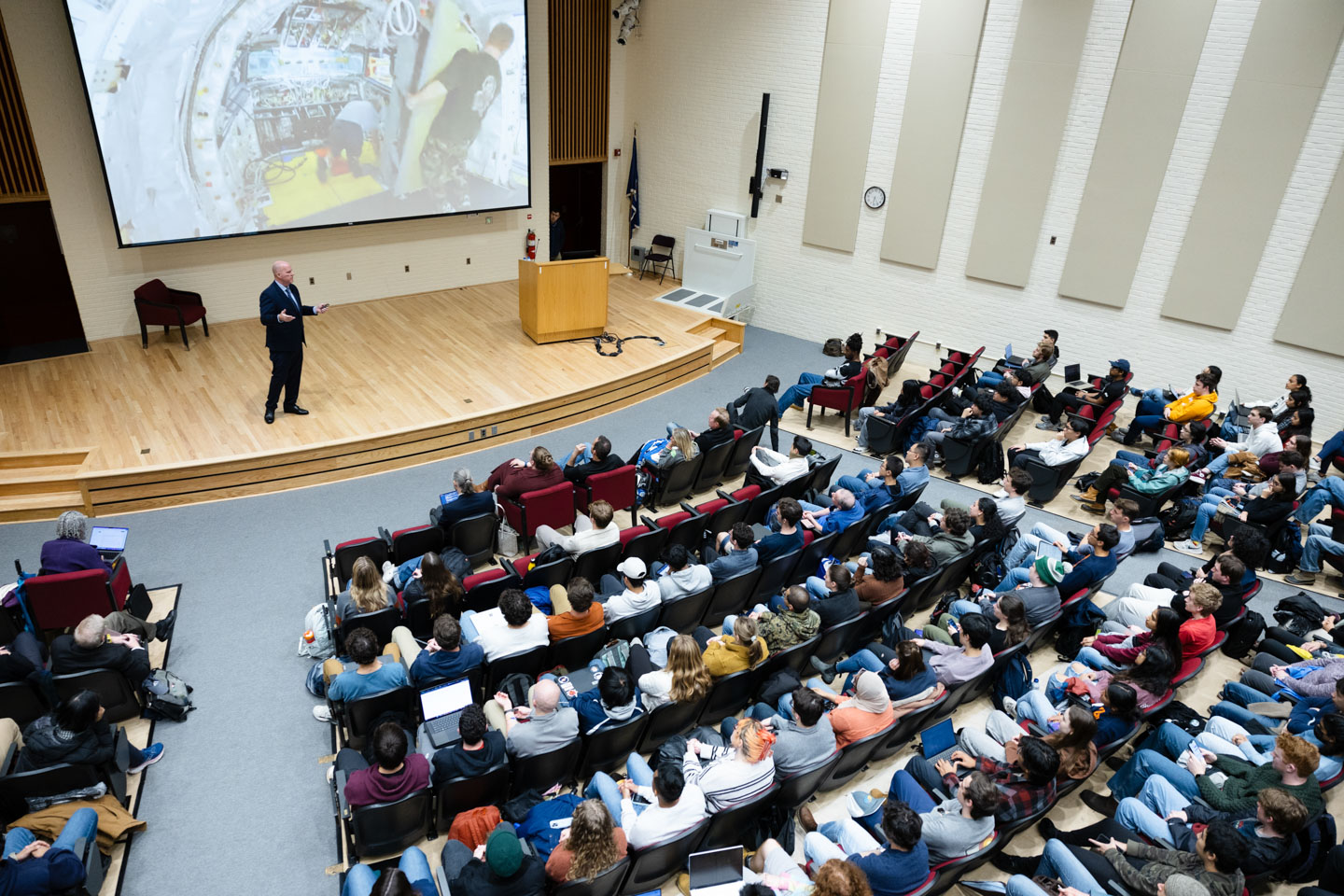
Work Flow on the Factory Floor
Pierson challenged students to guess how many of Boeing’s tens of thousands of engineers work on the Renton factory floor. The predictions started in the thousands, then fell to the hundreds, before Pierson held out his hand in shape of an “o.” Zero.
He said that doesn’t mean the workforce isn’t skilled nor worthy of respect for the conscientious services they provide; it just means that they may understand the bigger picture differently.
Pierson was responsible for two groups: the industrial engineers who lay out the plane and the “ship side” team that keeps records during the approximately 15,000 itemized inspections that he said are supposed to go into each plane throughout construction.
But only thousands of the quality control checks were performed on the two planes that crashed, he said, because of kinks in the supply chain and the expedited process to get planes delivered.
He said as parts were off schedule in their delivery, workers were asked to keep building, and to keep track of what was missing, so that they could go back later and finish the jobs — all done by hand.
The workers toiled 10-12 weeks straight without a day off, Pierson claimed. The number of incomplete planes grew so voluminous that they had to be parked outside of the building, in employee parking areas and even at a nearby school, in order to accommodate the pace of production.
Though he has not worked at the plant in six years, Pierson contended that the long tail of that supply chain problem presents safety risks to this day. The information sharing has continued as other Boeing whistleblowers have come forward.
Boeing, for its part, acknowledged the initial MCAS problems with the 737 Max 8 and detailed where it addressed them in its official statements that ended on Jan 27, 2021. The company’s website also has undated updates about changes to the 737 Max.
Furthermore, Boeing has complied with a Federal Aviation Administration investigation of quality control issues on the slightly larger 737 Max 9 following the door plug incident, which investigators believe may have been the result of four missing bolts.
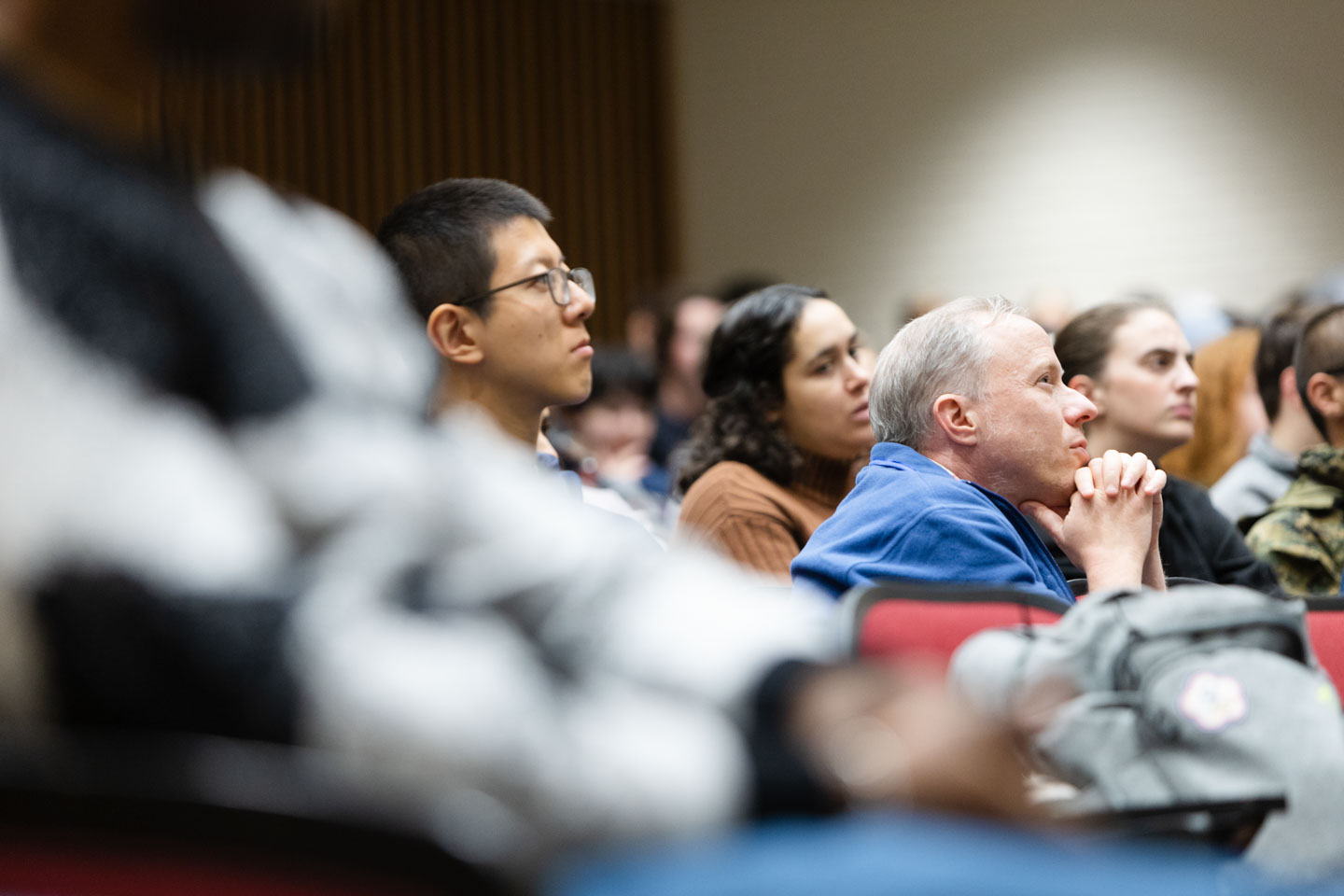
Career Advice: Doing the Right Thing
Rosalyn Berne, the Anne Shirley Carter Olsson Professor of Applied Ethics and the chair of the department of Engineering and Society at UVA Engineering, introduced Pierson. But before she did, she introduced the new Engineering Character Strength Initiative.
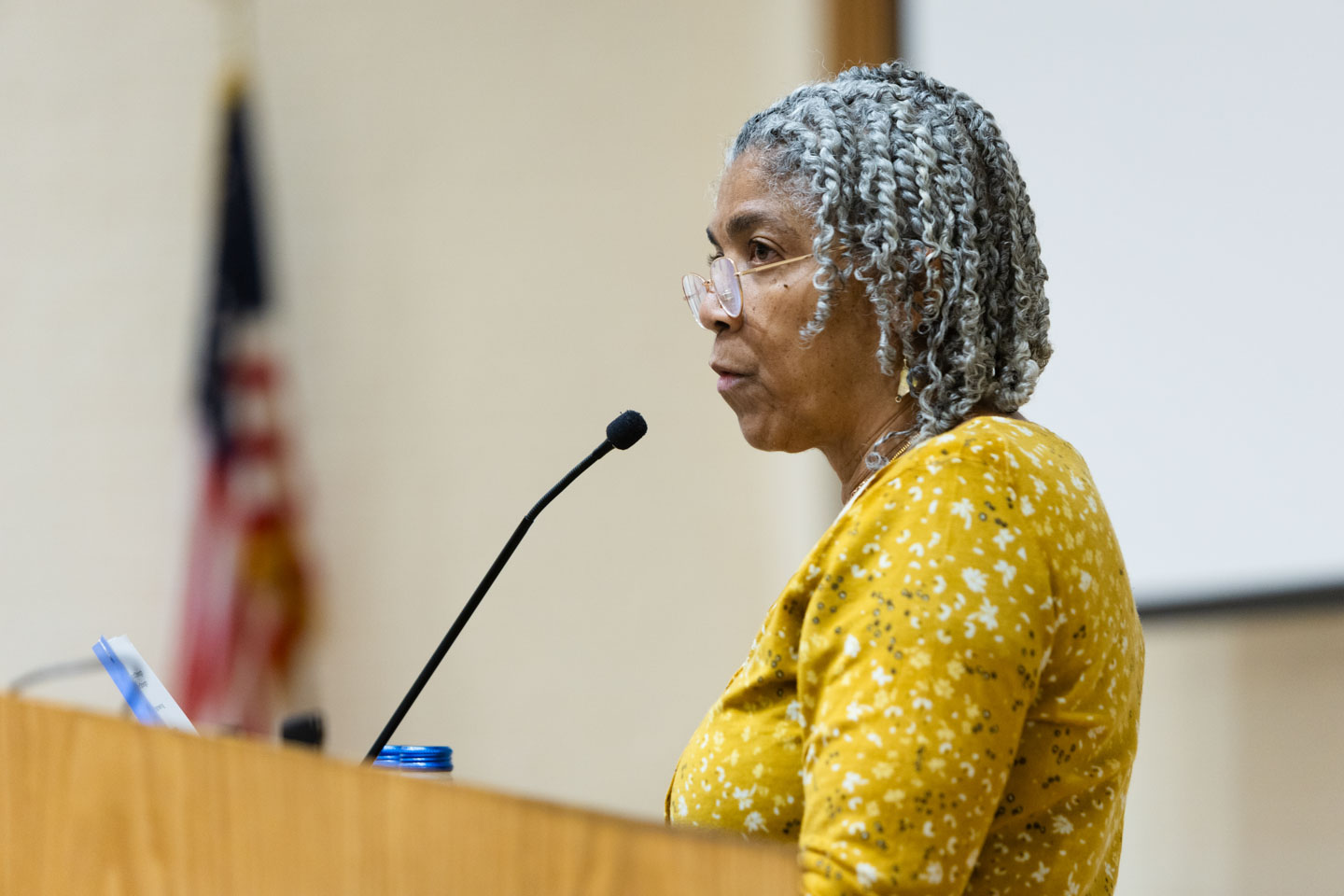
She said someone who does “what needs to be done, despite fear” fits the definition of a character role model.
Pierson, who graduated from the U.S. Naval Academy, Navy Flight School and George Mason University, served in the Navy for 30 years, including in the reserves, in addition to his decade at Boeing. He is now founder and executive director of the Foundation for Aviation Safety.
He shared multiple pieces of advice with students. Foremost was this: “If you make a mistake, own it.” He said he learned that in the military, because not owning up could put lives at risk.
He also cautioned that, “At some point being a new engineer, someone is going to dismiss you. You are going to feel kind of embarrassed. Expect this. Forgive yourself. It’s kind of rough out there.”
And in the event that graduates do run into a seemingly intractable ethical problem in the workplace, he suggested:
- Seek allies.
- Figure out who an informal leader might be, perhaps someone who is not in the hierarchical chain of command but who understands the situation and whose opinions matter to managers.
- Use critical thinking in concert with your inner values.
“You may lose your job,” he said. But he reminded the UVA Engineering students, “You are marketable.”
